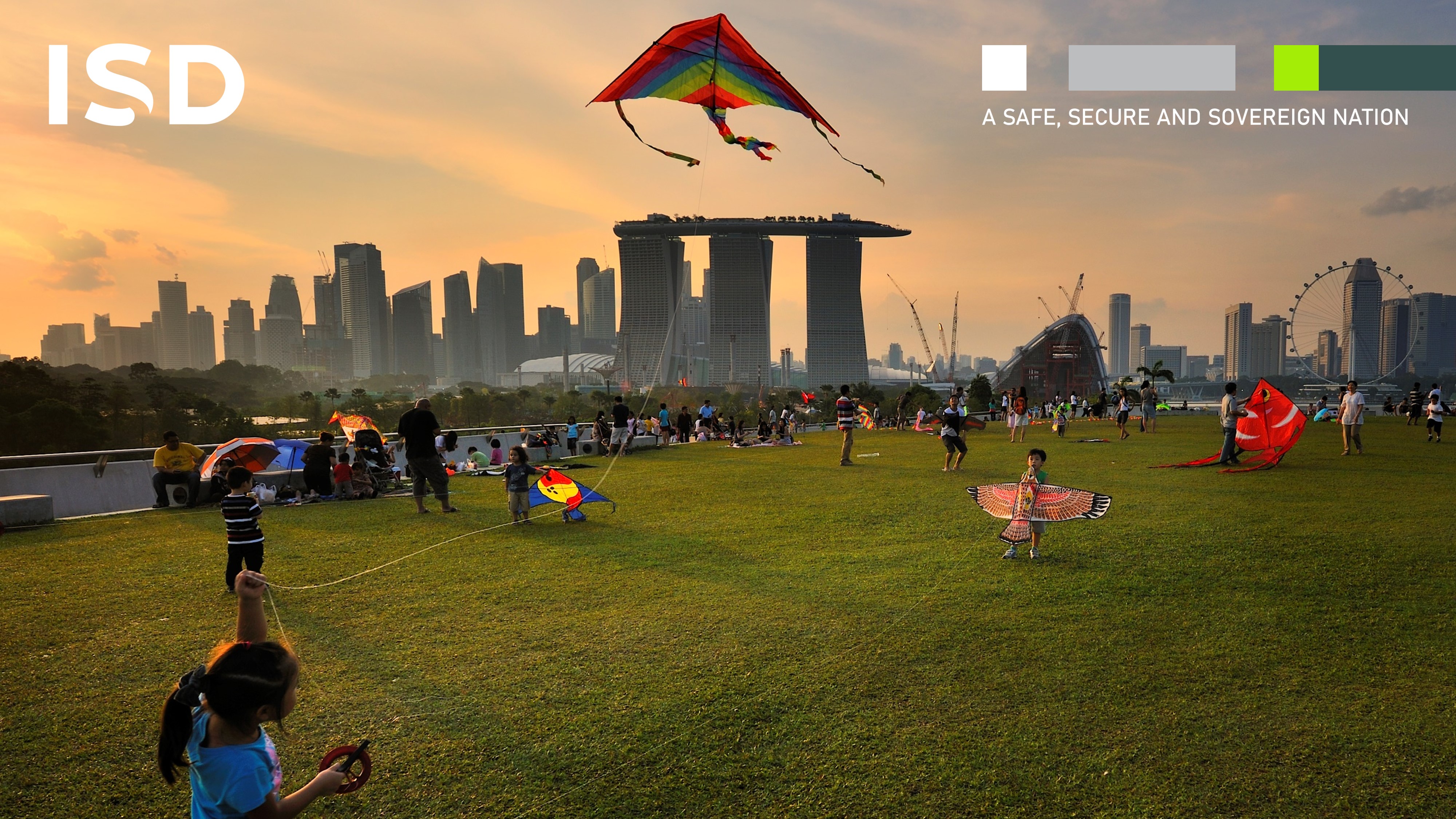Countering Terrorism and Violent Extremism
On 11 September 2001, the world watched in horror as operatives from the terrorist group, Al-Qaeda (AQ), hijacked and crashed two commercial aircrafts into the iconic World Trade Centre towers in New York City. A third aircraft was flown into the US Pentagon.
The catastrophic events of 9/11 marked the beginning of a new wave of terrorism, from which Singapore was not spared.
The first specific lead that ISD received which led to the disruption of the Singapore network of the AQ-affiliated regional terror group, Jemaah Islamiyah (JI), came from a vigilant member of the public. A Singaporean source had informed ISD that
Mohammad Aslam bin Yar Ali Khan (Aslam) had AQ links. ISD then mounted surveillance on a group of people associated with him and investigated them. In December 2001, ISD brought forward operations against Aslam’s associates after the media
published a report about Aslam following his arrest by the Northern Alliance in Afghanistan. As part of the operations mounted against the Singapore JI network, 15 persons were arrested by ISD between 9 December and 24 December 2001, and another 21 persons
were arrested in August 2002.
The terrorism threat is an evolving one. The mid-2000s saw the rise of self or home-grown radicalisation where individuals who were not part of any organized terrorist group became radicalised by the radical propaganda put out by groups like Al Qaeda or radical ideologues like Anwar al-Awlaki (deceased). In 2007, ISD detected the first case of a self-radicalised Singaporean who wanted to carry out armed violence overseas. As the Internet and the use of social media became ubiquitous, online terrorist propaganda became one of the key means through which individuals become radicalised.
In the mid-2010s, we saw the rise of the Islamic State in Iraq and Syria (ISIS) amidst the Syrian conflict. The game-changer during this period was the social media. ISIS’s savvy use of social media and ability to produce propaganda videos of high production value led to a new wave of radicalisation cases involving both Singaporeans and foreigners based here. Those radicalised were also getting younger, and for the first time, women were being dealt with under the ISA because of their terrorism involvement. Several of these radicalised individuals had harboured intentions to travel to Syria to fight alongside ISIS or other terrorist groups operating in the conflict zone. A few were even willing to conduct attacks in Singapore or against Singapore interests overseas. ISD’s pre-emptive security operations thwarted their violent plans.
Violent extremism is not restricted to any one race or religion. Beyond radical Islamist terrorism the global rise of other forms of violent extremist movements including far-right extremism, has added to the terrorism threat Singapore faces.
In December 2020, ISD detained the first self-radicalised individual who was influenced by far-right extremist ideology. The 16-year-old Singaporean youth was inspired by the March 2019 Christchurch mosque shooter, Brenton Tarrant, and wanted to emulate his attack.
Shortly after, the serious threat of lone-actor attacks was further underscored by the case of the 20-year-old Singaporean youth who was detained under the ISA in March 2021. Aggrieved by the Israel-Palestine conflict, he had made plans and preparations to conduct a knife attack against members of the Jewish community at the Maghain Aboth Synagogue in Singapore. He also wanted to travel to Gaza in the Palestinian territories to join the military wing of HAMAS.
These cases illustrate that external developments and foreign grievances have significant repercussions on Singapore’s security landscape, and could motivate at-risk individuals in our society to engage in violence.
The developments in Afghanistan in 2021 could also have an impact on Singapore’s domestic security. The state of civil conflict and Taliban’s ascension to power may allow transnational terrorist groups like AQ and ISIS to re-establish safe havens for training and attack planning. Militant groups may also leverage on ideological narratives to attract recruits, including radicalised individuals from Singapore, to Afghanistan as a theatre for jihad.
ISD is committed to taking firm action against any individual in Singapore who supports, promotes, undertakes or makes preparations to undertake armed violence. This is regardless of how the individual rationalises such violence, or where the intended violence is to take place. Anyone who knows or suspects that a person has intentions to travel to Afghanistan or other conflict zones should promptly contact the ISD Counter-Terrorism hotline 1800-2626-473 or make a report via the SGSecure app.
Historically, terrorism is not a new threat to Singapore. Singapore has had prior brushes with international terrorism, namely the Laju Incident in 1974 and the hijacking of flight SQ117 in 1991. The key difference between these earlier incidents and the terrorism threat that we face today is the fact that the JI network in Singapore, and the self-radicalised individuals dealt with in more recent years, were our fellow Singaporeans who were willing to resort to violence to advance extremist beliefs. The fight against the contemporary terrorism threat requires not only a kinetic response, but a battle of hearts and minds to ensure that extremist beliefs do not take root in our society.

